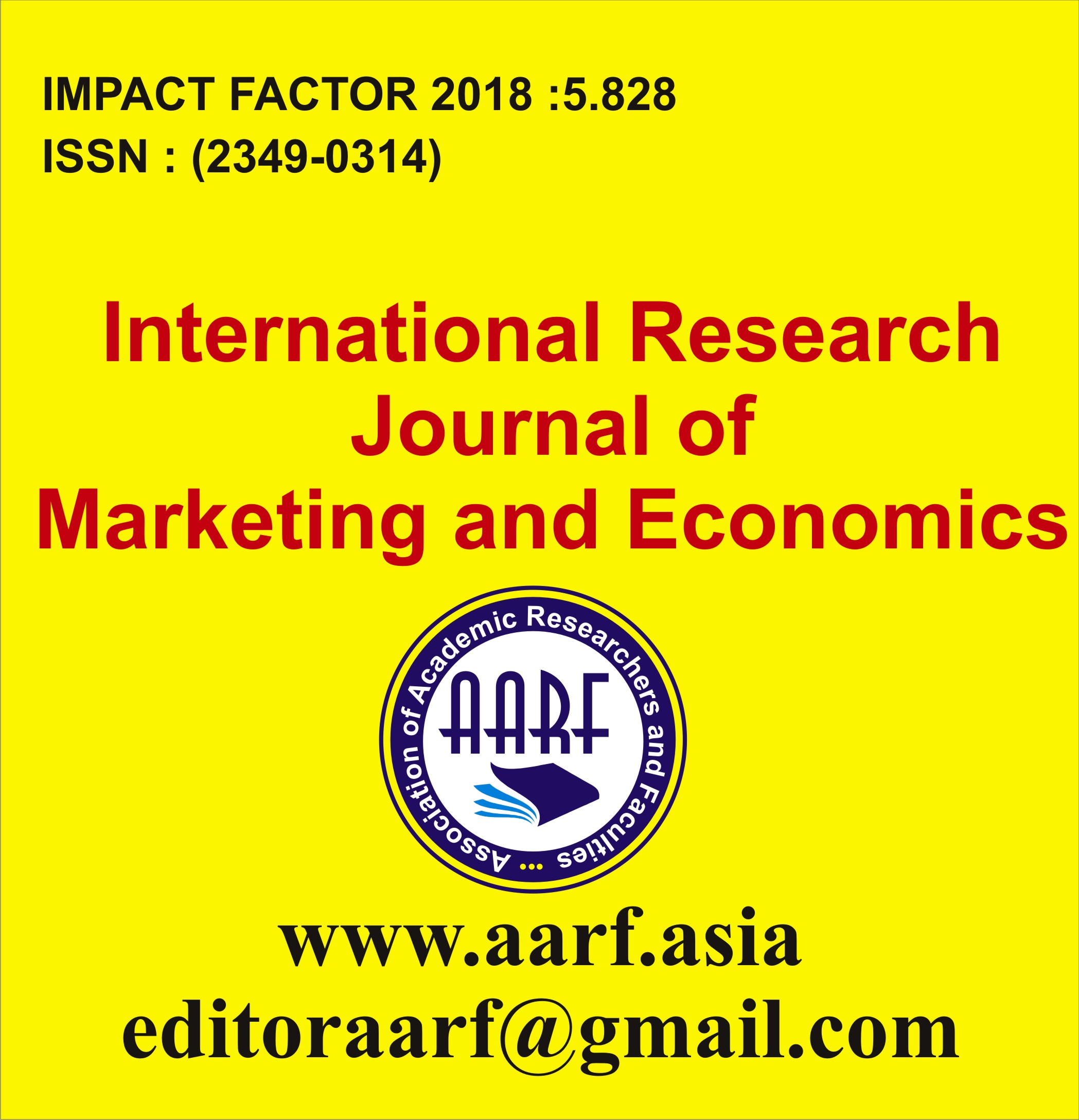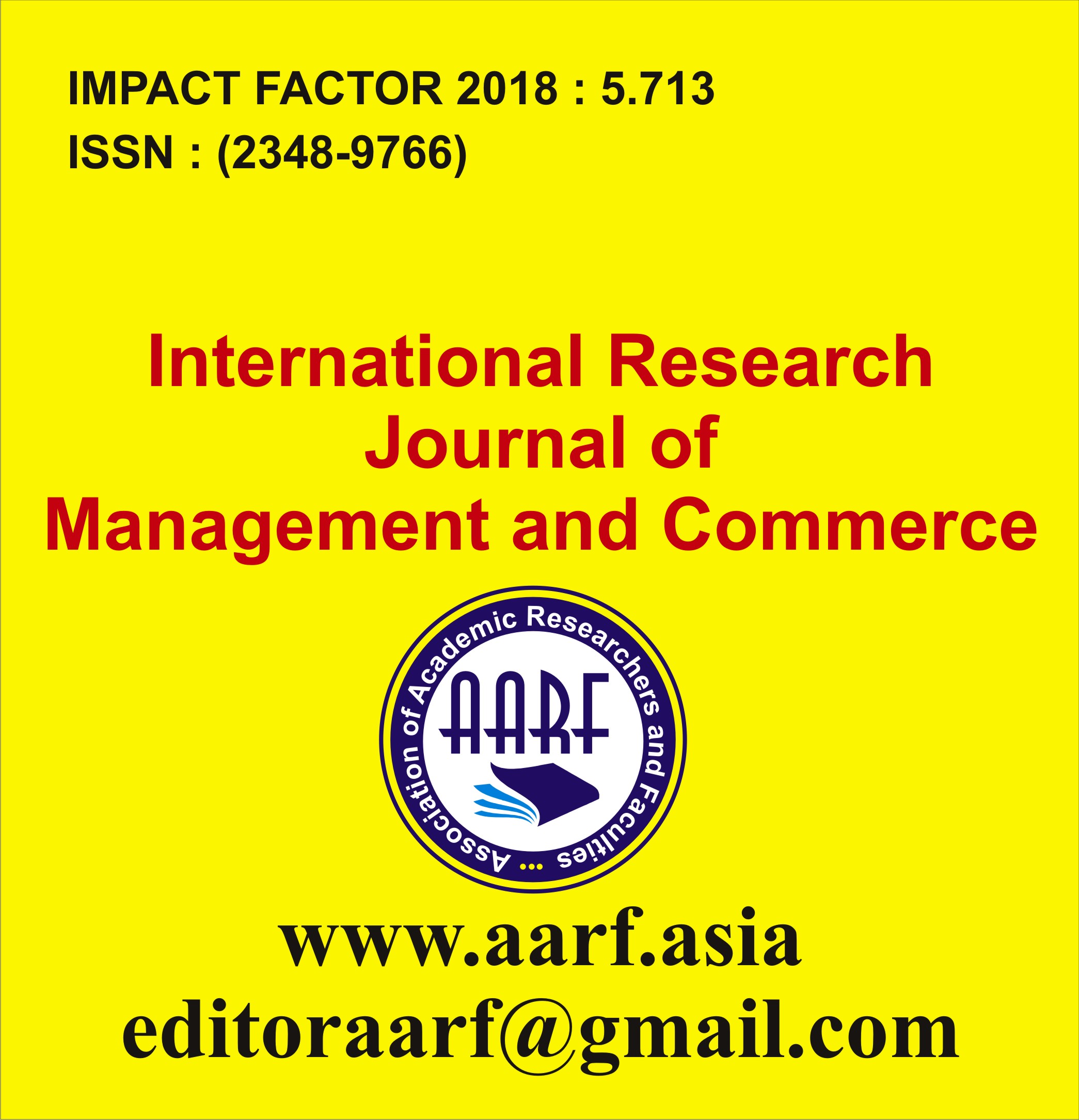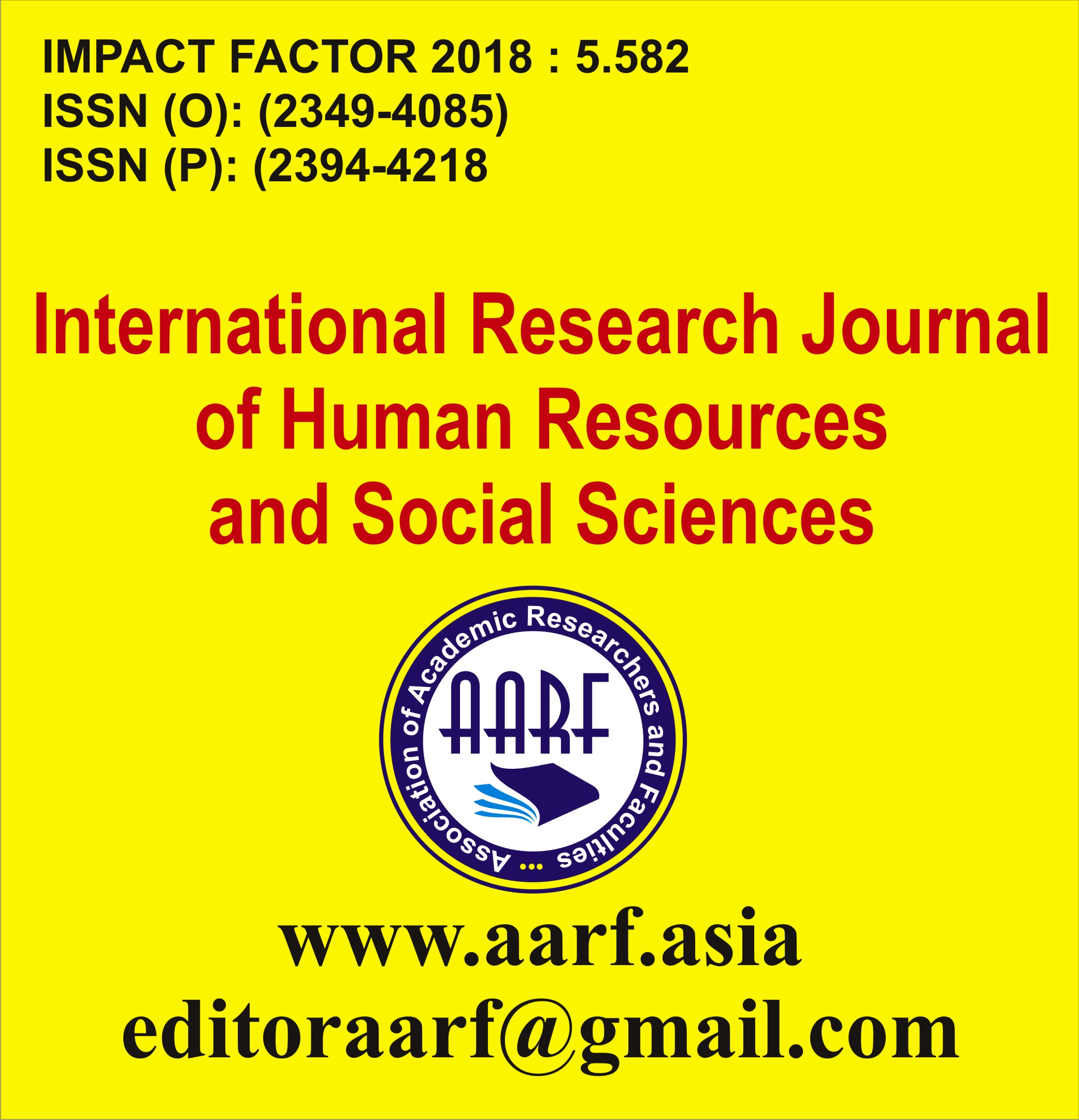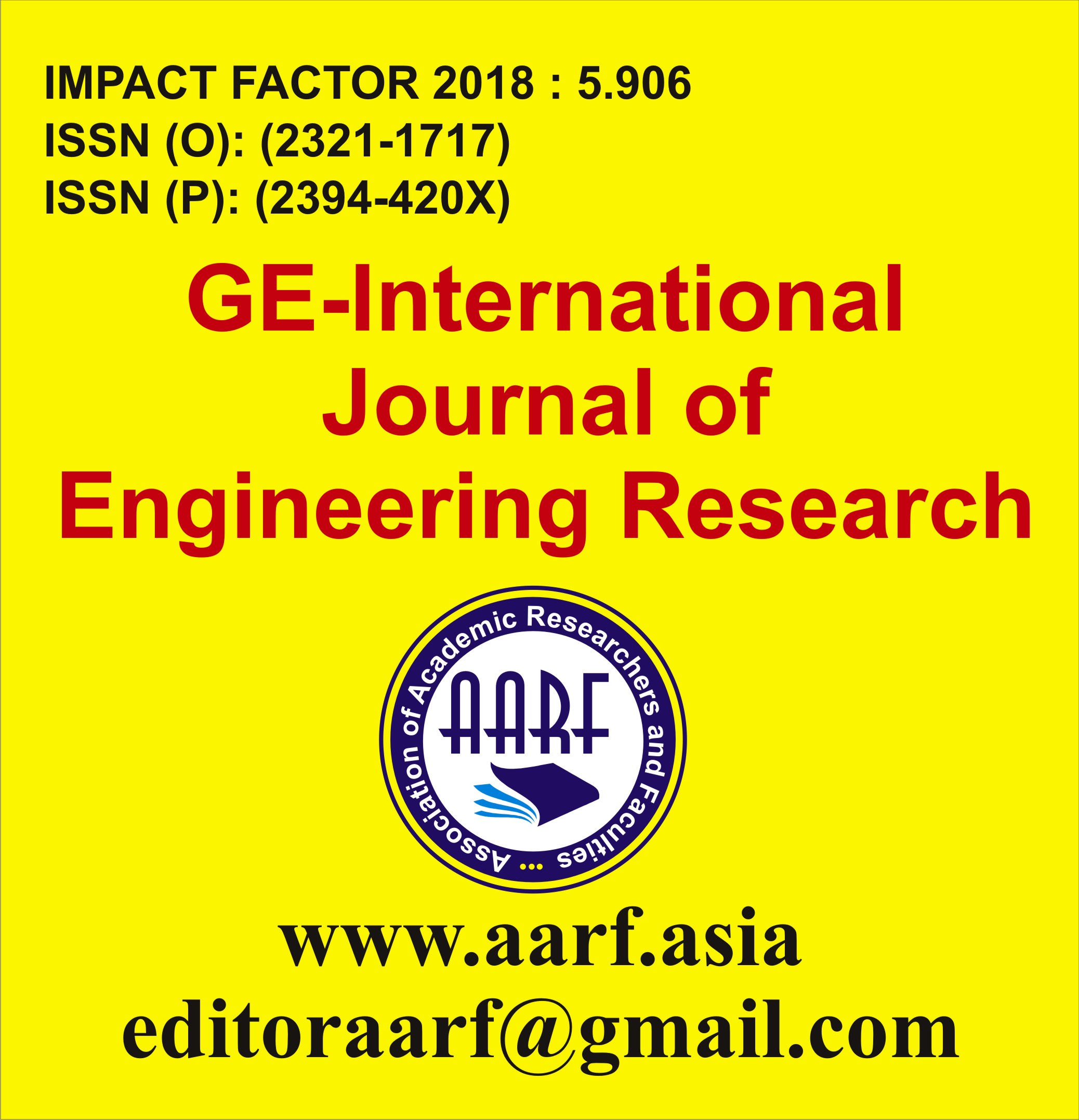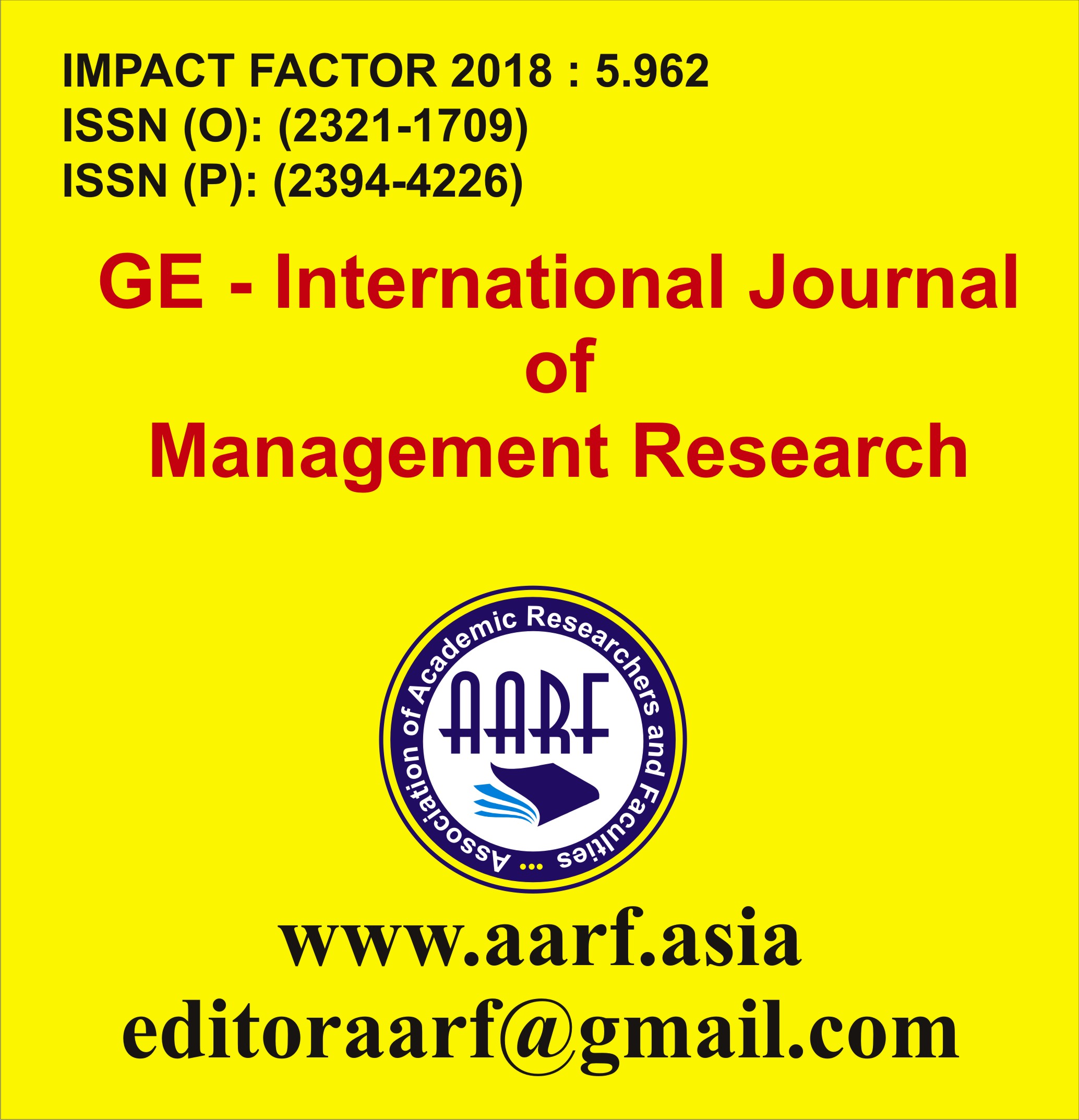
- Current Issue
- Past Issues
- Conference Proceedings
- Submit Manuscript
- Join Our Editorial Team
- Join as a Member

| S.No | Particular | Page No. | |
|---|---|---|---|
| 1 |
Dr. C. Senthil KumarAbstract: The institution of caste has been one of the exclusive characteristics of the Indian society since early ages. In spite of great changes in the history of India, caste has continued to be background of recent social changes; some people believe that the system of castes is one the way out. Others believe that in spite of changes in some of its external features, the caste system has retained most of its essential functions. |
|
1-8 |
| 2 |
Dr Varinder KaurAbstract: The study investigated the attitude of teachers towards Pervesh Project Literacy Scheme for primary classes in government schools in relation to gender and types of teachers (Junior and Senior). |
|
9-21 |
| 3 |
Mohini Saha & Pushpinder BishnoiAbstract: The study was conducted to identify the aspirations of rural tribal youth towards agriculture sector in TetarToli in Gumla district of Jharkhand.This paper maps the research terrain relating to young people‘s aspirations, focusing on defining and conceptualizing aspirations on the basis of four variables i.e. ambition, expectation, acceptance and knowledge. |
|
22-49 |
| 4 |
Anup Prakash Uppadhyay, K.N.KrishnakumarAbstract: The increasing demand for agricultural products globally, offers challenges and opportunities for producers to sustain and improve their livelihoods. Information and communication technologies (ICT) play an important role in addressing these challenges and uplifting the livelihoods of the rural poor. |
|
50-61 |
| 5 |
Dr. C. Senthil KumarAbstract: The emergence of India as an independent and democratic nation brought about certain basic changes in the policy and programme of adult education. Not only the prevalent colonial policy towards adult education was reviewed by the Government of India but also new programmes were developed to the changing needs of a democratic nation. |
|
62-67 |
| 6 |
Ekpenyong, Nkereuwem StephenAbstract: The problem of police unethical behavior has been a serious problem to Nigeria’s consolidating democracy. Historically, reform efforts have failed due to an organizational culture that is resistant to change. |
|
68-86 |
| 7 |
Dr. Thanabalasingam KrishnamohanAbstract: Decentralized government needs supportive attitudinal, behavioural and cultural conditions. Some of them include the willingness of local officials to support and perform decentralized management functions; the quality of leadership; the attitudes of local people towards government; and the degree to which traditions and behaviour are compatible with decentralized procedures for planning, decision making and management. |
|
87-100 |
| 8 |
Dr. Nisha MaryaAbstract: In most Indian households; a male child is given preferential treatment over a female child. India represents one of the most adverse Child Sex Ratio (CSR) figures amongst the Southeast Asian Countries, reflecting a highly undesirable reversal of the norms of natur |
|
101-106 |
| 9 |
Manjusha.K.A.Abstract: The paper seeks to examine the land question of Tribals and Dalits in Arippa, Kollam District in Kerala, India. In the context of developing countries such as India, the state of Kerala has often been cited as a model. |
|
117-124 |
| 10 |
Dr. Ramesh KumarAbstract: Panchayati Raj Institutions are playing important role in Indian society from ancient time. The grass root units of local self government have been considered as instruments of socio economic and political transformation in rural India. Involvement of people at the grass root level is the most important means of bringing about socio, economic and political development. It is identified as institutional expression of democratic decentralization in India |
|
157-168 |
| 11 |
Manoj Kumar GroverAbstract: Moving form Train to Pakistan to Delhi : A Novel is like moving from a shorter one to an epical canvass, from a romantic one to an epical chronicle. Delhi : A novel, which came after the Hindu-Sikh communal riots of 1984, is not simply a description of communal riots, but a deep study of this novel through the experiences of its characters shows that it is a portrayal of the gradual evolution of the Sikh’s community and the predicaments faced by it. |
|
170-175 |
| 12 |
Manoj Kumar GroverAbstract: Moving form Train to Pakistan to Delhi : A Novel is like moving from a shorter one to an epical canvass, from a romantic one to an epical chronicle. Delhi : A novel, which came after the Hindu-Sikh communal riots of 1984, is not simply a description of communal riots, but a deep study of this novel through the experiences of its characters shows that it is a portrayal of the gradual evolution of the Sikh’s community and the predicaments faced by it. |
|
170-175 |
| 13 |
गीता देवीAbstract: पंजाब में उगà¥à¤°à¤°à¤¾à¤·à¥à¤Ÿà¥à¤°à¤µà¤¾à¤¦ : सà¥à¤¶à¥€à¤²à¤¾ देवी कीà¤à¥‚मिका का अधà¥à¤¯à¤¯à¤¨ |
|
176-179 |
| 14 |
Parveen kumarAbstract: It was the morning of 11 May 1857. The city of De1h had not yet woken up when a band of Sepoys from Meerut, who had defied and killed the European officers the previous day, crossed the Jamuna, set the toll house on fire and marched to the Red Fort |
|
180-189 |
| 15 |
SONIAAbstract: Agriculture is the backbone of Indian economy which in turn relies on the monsoon season. Rising global temperature is not only causing climate change but also contributing to the irregular rainfall patterns. |
|
190-196 |
| 16 |
Dr Mrs Vibha GuptaAbstract: Mahatma Gandhi’s eradication of social evils from Indian society was as important a task as liberation of India from British colonialism. Gandhiji kept the agenda of ‘constructive work’ always alive even during the peak of his political movements |
|
197-204 |
| 17 |
Dr.Sunil ChoudharyAbstract: The present research on Quality of work life as a HR sub-system: A study on perception of employees is an attempt to identify the factors affecting the Quality of Work Life in the organization along with the perception of the employees regarding the quality of life |
|
209-224 |
| 18 |
|
|
225-232 |
| 19 |
H. R. Kulkarni1 M. J. Kolhatkar2Abstract: The problem of work stress is very common in any organization occupation or in profession. Higher educational institutes are not exception for that. In several educational institutions there are higher levels of work stress among the faculty members |
|
233-243 |
| 20 |
Dr. G. S. ChauhanAbstract: INDIGO CULTIVATION AND THE NARRATIVE OF RESISTANCE OF RYOTS IN BENGAL |
|
244-252 |
| 21 |
TeenaAbstract: Stock markets and their efficiencies are the keen area of study for researchers, economists, investors, academicians, government bodies and corporate houses. This paper analyses the weak form efficiency of CNX Nifty and its three core sectors that are CNX Bank, CNX PSU Bank and CNX Financial Services by using daily closing prices logged returns and various parametric and non parametric |
|
253-264 |
| 22 |
डॉ0 सरà¥à¤µà¥‡à¤¶à¥à¤µà¤° नाथ सिंहAbstract: जनसंखà¥à¤¯à¤¾ पà¥à¤°à¤µà¤¾à¤¸ à¤à¤µà¤‚ सà¥à¤¥à¤¾à¤¨à¥€à¤¯ विकास (जनपद बहराइच का à¤à¤• पà¥à¤°à¤¤à¥€à¤• अधà¥à¤¯à¤¯à¤¨) |
|
253-257 |
| 23 |
DR.NAVEEN KUMAR SINGHAbstract: Adjustment is dynamic and interactive process that takes place between the man and the nature, and is directed toways an achievement of the fitment between these two. Many researchers consider nature as a complex process in the study of poetry. The major reason is that culture of nature differs from country to country. Review of work done on Wordswoth's study are as under the present study. |
|
258-261 |
| 24 |
Dr. Suresh KumarAbstract: The study analysed the relationship of emotional intelligence and academic performance among undergraduate students in Distt. Baghpat. A sample of 100 students was selected through a random sampling technique. The descriptive, correlation, and cross-sectional research methods were used in this study. A standardized and systematized tool i.e “Emotional Intelligence Inventory designed by S.K. Mangal and ShubhraMangal. Scale†was employed for the collection of information. The academic percentage of the students was taken as academic performance. Data were gathered up by online. |
|
270-285 |
| 25 |
डॉ राजकुमार सिंह परमारAbstract: आधुनिक भारतीय साहित्य के महाकाव्यों में महिलाओं का चित्रण उनकी भूमिकाओं, चुनौतियों और एजेंसी की सूक्ष्म खोज द्वारा चिह्नित है। आधुनिक भारतीय महाकाव्य, जबकि अक्सर पारंपरिक कथाओं में निहित होते हैं, महिलाओं के जीवन को उन तरीकों से पुनर्व्याख्या और पुनर्कल्पित करते हैं जो समकालीन सामाजिक-राजनीतिक वास्तविकताओं के साथ प्रतिध्वनित होते हैं। ये कथाएँ अक्सर महिला पात्रों की ताकत, लचीलापन और जटिलता को उजागर करती हैं, उन्हें व्यक्तिगत और सामाजिक परिवर्तनों दोनों में केंद्रीय व्यक्ति के रूप में प्रस्तुत करती हैं। महिलाओं के निष्क्रिय या गौण पात्रों के रूप में पारंपरिक चित्रण से अधिक सक्रिय और सशक्त भूमिकाओं में बदलाव आधुनिक भारतीय महाकाव्यों की एक परिभाषित विशेषता है। इन कथाओं में महिलाओं को नायक के रूप में चित्रित किया गया है जो पितृसत्तात्मक संरचनाओं को नेविगेट और चुनौती देती हैं, अपनी स्वायत्तता का दावा करती हैं और महाकाव्य कथाओं को सामने लाने में महत्वपूर्ण योगदान देती हैं। लैंगिक समानता, सामाजिक न्याय और व्यक्तिगत स्वतंत्रता जैसे विषय प्रचलित हैं, जो भारतीय समाज में महिलाओं के प्रति बदलते दृष्टिकोण को दर्शाते हैं। इसके अलावा, आधुनिक भारतीय साहित्य अक्सर नारीवादी लेंस के माध्यम से रामायण और महाभारत जैसे शास्त्रीय महाकाव्यों पर फिर से विचार करता है और उनकी पुनर्व्याख्या करता है। यह पुनर्कल्पना सीता और द्रौपदी जैसी प्रतिष्ठित महिला पात्रों की भूमिकाओं की आलोचनात्मक जांच करने की अनुमति देती है, जो उनके अनुभवों और संघर्षों पर नए दृष्टिकोण प्रदान करती है। निष्कर्ष रूप में, आधुनिक भारतीय साहित्य के महाकाव्यों में महिलाओं की भूमिका परंपरा और आधुनिकता के गतिशील अंतर्संबंध की विशेषता है। ये कथाएँ न केवल महिलाओं की ताकत और एजेंसी का जश्न मनाती हैं, बल्कि लिंग और सामाजिक परिवर्तन पर चल रहे विमर्श से भी जुड़ती हैं, जिससे वे साहित्यिक परिदृश्य का एक महत्वपूर्ण हिस्सा बन जाती हैं। |
|
291-301 |












